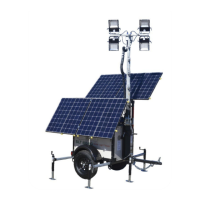57TriStar MPPT Operator’s Manual
56
Networking and Communication
5.5 Ethernet
NOTE:
Ethernet is only available on the TS-MPPT-60/M model.
CAUTION: Risk of Tampering
The TS-MPPT does not feature built-in network security. It is the responsibility of
the user or network administrator to place the TS-MPPT behind a network rewall to
prevent unauthorized access.
PRUDENCE : Risque de tentative d’altération
Le TS-MPPT ne comporte pas de sécurité réseau intégrée. Il incombe à l’utilisateur
ou à l’administrateur du réseau de placer le TS-MPPT derrière un pare-feu réseau an
d’empêcher l’accès non autorisé.
The Ethernet port supports HTTP, MODBUS TCP/IP
TM
, SMTP, and SNMP protocols to provide a fully
web-enabled interface between the TriStar MPPT 150V and a LAN/WAN network or the internet.
Some of the many features the Ethernet connection provides include:
• program custom settings with MSView
TM
PC software
• monitor the controller from a web browser
• modify controller settings from a web browser
• log and monitor the system with MSView
TM
PC software anywhere on the internet
• create custom web pages to show system data
• send an email or text message if a fault, alarm, or user-dened event occurs
• monitor and receive messages on an SNMP network
This section provides a summary of each of the features. For detailed information about Ethernet
connectivity and networking, refer to the, “Morningstar Communications Document” at:
morningstarcorp.com/support
Network Information
Connect to the TriStar MPPT 150V via an Ethernet network (LAN/WAN) or connect the controller di-
rectly to a PC using an ethernet cross-over cable. Use CAT-5 or CAT-5e twisted pair Ethernet cables
with RJ-45 connectors. A network diagram for both scenarios is shown in gure 5-3 below.
Ethernet Cross-over
Cable
Figure 5-3. Ethernet network diagrams.

